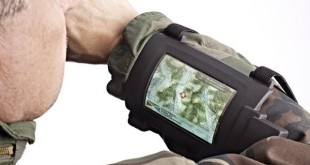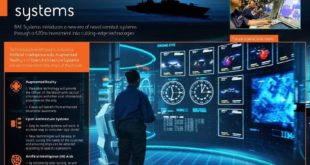Our society’s infrastructure is increasingly dependent on software deployed on a wide variety of computing devices other than commodity personal computers, such as industrial equipment, automobiles, and airplanes. Unlike commodity computers that have short upgrade cycles and are easily replaceable in case of failure, these computing devices are intended for …
Read More »AI and cognitive robotics progressing towards Artificial consciousness (AC), machines with emotional intelligence and be as convincing as people.
Artificial intelligence is a branch of computer science dealing with the simulation of intelligent behavior in computers. A computer system able to perform tasks that normally require human intelligence, such as visual perception, speech recognition, decision-making, and translation between languages. The first wave of AI was rule-based and “second wave” …
Read More »Emerging Artificial-biological hybrid computing will enable Integration of Artificial and Human Intelligence (AI & HI)
Artificial intelligence is a branch of computer science dealing with the simulation of intelligent behavior in computers. A computer system able to perform tasks that normally require human intelligence, such as visual perception, speech recognition, decision-making, and translation between languages. The first wave of AI was rule-based and “second wave” …
Read More »DARPA ( AIE, XAI and AI Next) developing “third wave” AI based adaptive military systems that are trustworthy, learn continuously, and explain their rationale
The first Wave of AI is Crafted Knowledge, which includes rule-based AI systems. In the first wave,humans defined the rules for the Intelligent machines and they follow the rules. The second wave of AI is Statistical Learning, which includes machine becoming intelligent by using statistical methods. This includes all machine …
Read More »Future Software intensive and software defined military systems need new policies and technologies to field, maintain, update and upgrade software
Software is everywhere and is in almost everything that the Department operates and uses. Software drives our weapon systems; command, control, and communications systems; intelligence systems; logistics; and infrastructure, and it drives much of the backroom enterprise processes that make the Department function. If cyber is the new domain in …
Read More »Flexible displays enable lighter-weight, lower-power, more-rugged smartphones , soldiers wearable and vehicle applications
With the flat panel display having already been widely used more than 40 years, there have been many desired changes in the display technology, focusing on developing a lighter, thinner product that was easier to carry and store. A flexible display or rollable display is an electronic visual display which …
Read More »Heterogeneous computing architecture for emerging digital warfare
The world of high-performance computing is particularly challenging, as new flavors of sophisticated sensors, complex cameras, and the requirements of Advanced computations, which include Software-Defined Radio, cryptography, and other types of arithmetic-intensive algorithms. Recent developments in artificial intelligence (AI) and growing demands imposed by both the enterprise and military sectors …
Read More »Challenges of exascale to zettascale computing and technology breakthroughs enabling them
Science’s computing needs are growing exponentially. The next big leap in scientific computing is the race to exascale capability which computes one thousand petaflops per second that is capable of performing 1 million trillion floating-point operations per second (1 exaflops). Currently the fastest systems in the world perform between ten and …
Read More »Navies testing Augmented-Reality(AR) systems onboard Warships for battlesace situation awareness, combat training and remote maintenance
Military operations are becoming increasingly diverse in their nature. To cope with new and more demanding tasks, the military has researched new tools for use during operations and during training for these operations. There have been numerous goals driving this research over the past several decades. Many of the military …
Read More »Optical processors for high performance and energy efficient computing for data centres and supercomputers
Moore’s Law which stated that the number of transistors on a chip will double approximately every two years has been the driver of semiconductor industry in boosting the complexity, computational performance and energy efficiency while reducing cost. The increase in computing performance of electronic computers is becoming more and more …
Read More » International Defense Security & Technology Your trusted Source for News, Research and Analysis
International Defense Security & Technology Your trusted Source for News, Research and Analysis








